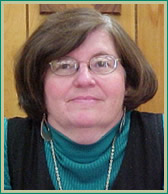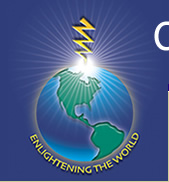
A Stylish Grand Opening
|
 |
|
| Maybeth Conway Senior Associate |
Imagine a wizard with magical powers. With just the wave of a wand or the push of a Play button, our wizard has the ability to recreate vivid memories of the defining moments of your career. Now, don’t be misguided here. We’re not talking about those traditional high points when you proudly earned another degree, rose to a new position, or received some well-deserved formal honor. We’re referring to the three or four truly inspired moments when you were at your absolute peak performance—all of your talents and instincts flowing freely and the fruits of your labor verging on genius. We’re referring to your Grand Openings.
For me, one of those Grand Openings occurred many years ago when I was a relatively inexperienced professional development leader. For reasons I will never fully understand, I spontaneously abandoned my customary stick-to-the-script practices of teacher training. I ditched some original content, designed additional activities on the fly, and ended up with one of the most memorable adult learning moments of my career. My colleagues and I together gathered inspiring insights into the challenges of true openness.
The title of this seminar was “The Stylish Educator.” It centered on some materials that were developed by a friend and colleague, Richie Hallahan. The core content was derived from Carl Jung’s seminal work on Psychological Types. These same constructs serve as the framework for the Myers-Briggs Type Indicator, Bernice McCarthy’s 4Mat training, and many lesser-known measures of personality and learning style.
To begin the program, teachers completed a forced-choice inventory of forty questions. Once scored, this generated a personality style indicator that correlated roughly with Jung’s core personality styles and the four quadrants of McCarthy’s 4Mat model. In this case, each participant identified his/her dominant color. Red participants were the sensing-feeling members of the group who learn and lead through human interaction and personal experience. The Yellows were our traditionalists, the intuitive-thinking folks who treasure knowledge, ideas, theories, or concepts. The third category gave us our Greens, the sensing-thinking participants who value utility, efficiency, and tangible outcomes. Finally, we had our Blue component that included the intuitive-feeling members who thrive on novelty, creativity, and futuristic problem solving.
Once these basic color categories were introduced, workshop participants formed like-color groups to continue the exploration of their group style. The original design called for this activity to lead directly into an exploration of leadership styles based on color. However, as I watched the subgroups interact, I saw some personal style prejudice emerging; many participants clearly believed that theirs was definitely the best color. This was not my intended outcome, so I scrapped my original design on the spot and went with an uncharacteristic mid-course correction.
I began by asking each group to create a color-coded brag list of their most salient attributes. Most groups liked this activity, particularly the Blues, who added pictures, songs, and a bit of choreography to their presentation. Then we moved to an exercise that was described as an ego-antidote. Participants returned to their like-color subgroups to discuss their opposing-color colleagues. In this case, they were asked to identity the most challenging or annoying behaviors that made it difficult to work with members of the opposing groups. Some subgroups appeared to enjoy this task; the Greens were particularly eager to share their disdain for those touchy-feely Reds, while the Yellows created a lengthy prioritized list in perfect alphanumeric outline form. Predictably, other groups, reluctant to criticize their colleagues, found this task more difficult. To lighten their discomfort, I collected these lists and assumed the messenger’s role. A bit of playfulness went a long way toward softening the blows. Finally, we completed this cycle by returning to our like-color subgroups one last time. For this activity, each color was asked to identify the most important gifts that their opposing color brought to the learning or leadership environment. These insights were shared publicly to create a closing celebration that honored our openness to self and others.
As this brief seminar drew to a close and participants were encouraged to reflect on their experience, it was clear that this had been a colorful Grand Opening for many. Most reported a clearer understanding of their personal teaching or leadership style. More than a few admitted that their eyes had been opened to the downside of their particular style. Many reported a deeper understanding of and appreciation for those who gather information and make decisions in ways that are very different from them. Virtually everyone acknowledged a newfound appreciation for the depth and richness that the complete style spectrum brings to any teaching, learning, or leadership setting.
Nearly fifty years ago, Kathleen Myers wrote:
"The clearest vision of the future comes only from the intuitive, the most practical realism only from a sensing type, the most incisive analysis only from a thinker, and the most skillful handling of people only from a feeling type. Success for any enterprise demands a variety of types, each in the right place." (Myers, Marching to Different Drummers, 1962, p. 19)
As we bid farewell to the magical memory wizard and turn our gaze toward the future, it might be wise to pause for a moment to examine each of our unique profiles of strengths and limitations. It might also be helpful to reflect on the diverse talents and perceptions that others will bring to the challenges that lie ahead. Perhaps it’s time for a stylish Grand Reopening.
![]()
Center for Empowered Leadership ®
Email: info@cfel.org
Phone: 1.609.259.7911
